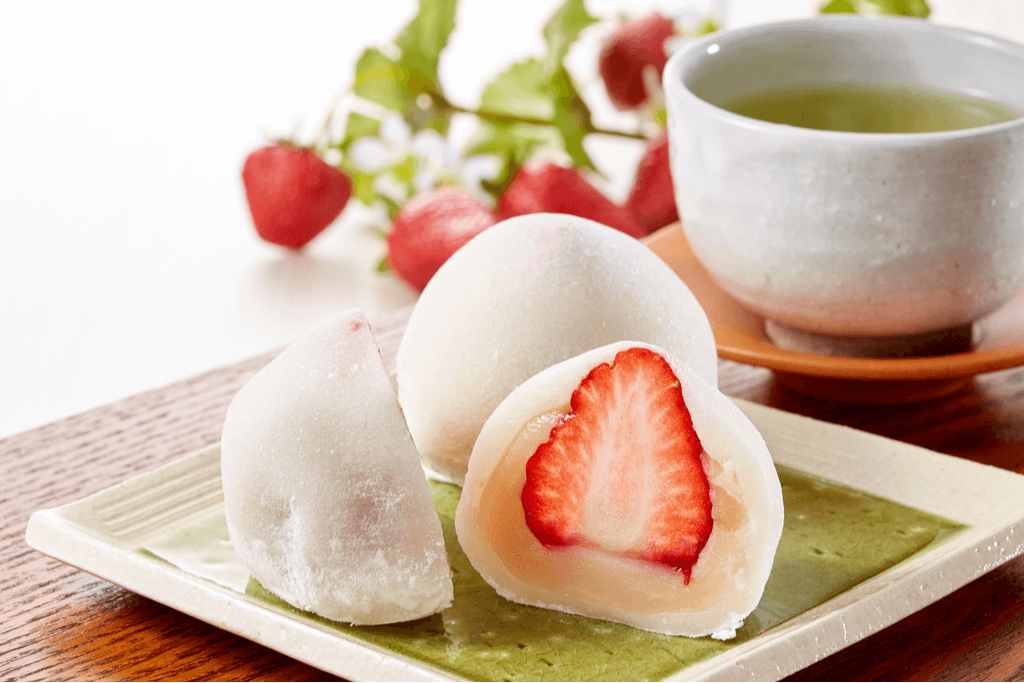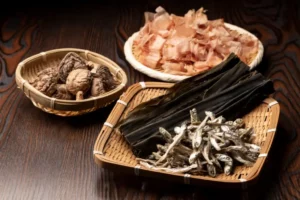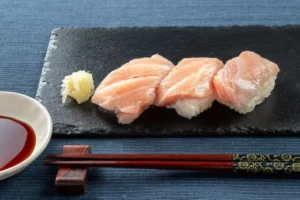Mochi is one of the most popular Japanese desserts out there, and for good reason. There are many different types of mochi, and they are all delicious and unique. Deeply tied to Japan’s cultural heritage, mochi is a type of chewy Japanese rice cake and signature Japanese food that has been around for centuries. It was traditionally made by pounding steamed Japanese rice known as mochigome (short-grain japonica glutinous rice) until it resembled a dough.
If you are a mochi lover and you want to learn about the different types of mochi you can try, then you are at the right place. Keep on reading as we are going to share the best types of mochi to enjoy during your tea time.
Table of Contents
ToggleYatsuhashi
Yatsuhashi is one of Kyoto’s most famous and popular souvenirs. It is a triangle-shaped mochi made from glutinous rice flour and sugar that comes with many possible fillings between thin layers of mochi.
With two different kinds of yatsuhashi, It can come as nama (fresh) or baked. Fresh yatsuhashi is typically shaped into triangles, flavored with cinnamon or matcha, and features a small red bean filling. Baked yatsuhashi has fillings with nikki (cinnamon) used to give yatsuhashi its signature taste.
Matcha is a great pairing with yatsuhashi (among many other kinds of mochi), since the sweetness of the mochi envelops the palate, smoothing out the taste of the tea. This is a good way to sweeten a tea without adding anything to it.
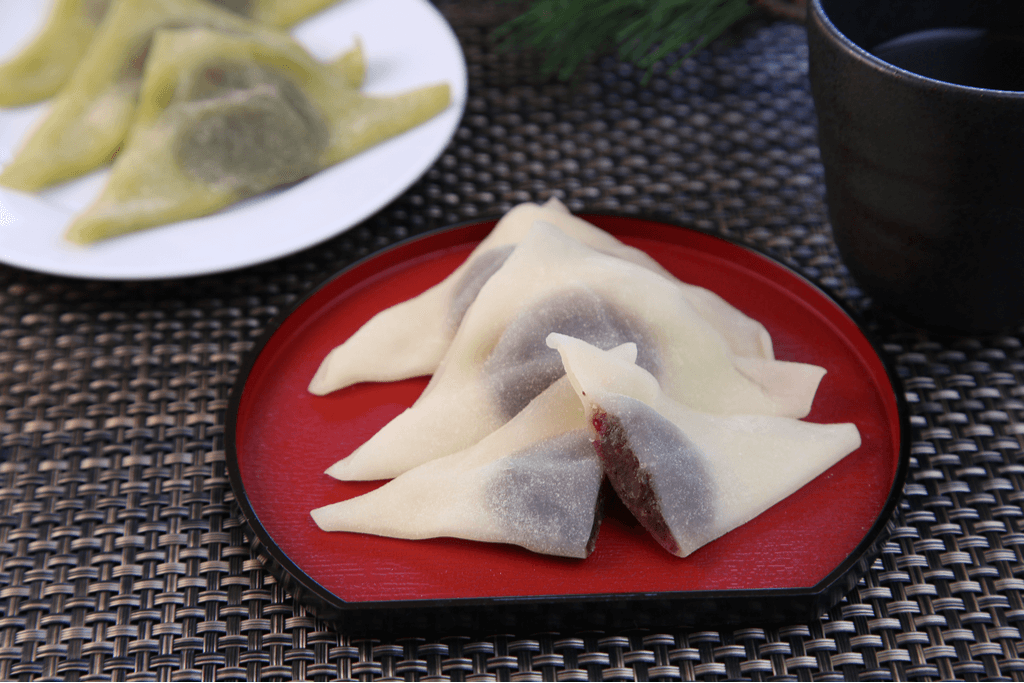
Daifuku
Daifuku is a soft, round mochi with sweetened anko (sweet red bean paste) or shiroan (white bean paste) inside. However, you can also find other filling variations and types of daifuku, such as ichigo (strawberry) which is popular in winter.
In the case of ichigo daifuku, the filling is a whole strawberry wrapped in a thin layer of anko and then in a layer of soft white mochi. Depending on the season, you can even enjoy a version of this tasty Japanese sweet with the famous Amaou strawberry from Fukuoka.
The daifuku mochi tastes sweet and earthy, with a relatively smooth filling. This goes just right with the equally chewy texture of the mochi itself. Daifuku is even more delicious with a red or rooibos tea since it has a natural subtle sweetness, and rich, slightly red fruit flavor.
Love Japanese mochi alongside a delicious cup of Japanese tea? Check out Sakuraco! Sakuraco delivers traditional Japanese snacks, teas, sweets, and snacks from local Japanese makers directly to your door for at-home tea time!
Sakura Mochi
An extra-sweet pink mochi, sakura (cherry blossom) mochi is sold in spring for hanami (cherry blossom viewing season) and eaten during Hinamatsuri (Girls Day). Usually containing red or white bean paste, this Japanese spring treat is wrapped in a salty pickled sakura blossom leaf which is also edible, contrasting with the sweetness for a delicious sweet and salty treat.
Genmaicha (brown rice tea) flavoring lies between the savory, caramel notes of an oolong tea and the light floral notes of traditional sencha (Japanese tea made by infusing tea leaves) which pair well with the sakura mochi.
Mochi Ice Cream

If you like ice cream and you like mochi, here’s the best of both worlds. Mochi ice cream is mochi dough that is filled with sorbet-style ice cream, which comes in a variety of flavors. This twist on traditional mochi is typically made with a flour called mochiko (sweet rice flour) that produces a mochi-like texture.
The ice cream adds flavor and creaminess to the confection while the mochi adds sweetness and texture. Want to try a different and delicious combination for your tea time? Try pairing mochi ice cream with an herbal fruit drink in which the delicate flavor balances the sweetness well.
Despite the difference in temperature, these two delicious treats get along splendidly. Another combination that we love is chocolate mochi ice cream and chai.
Hanabira Mochi
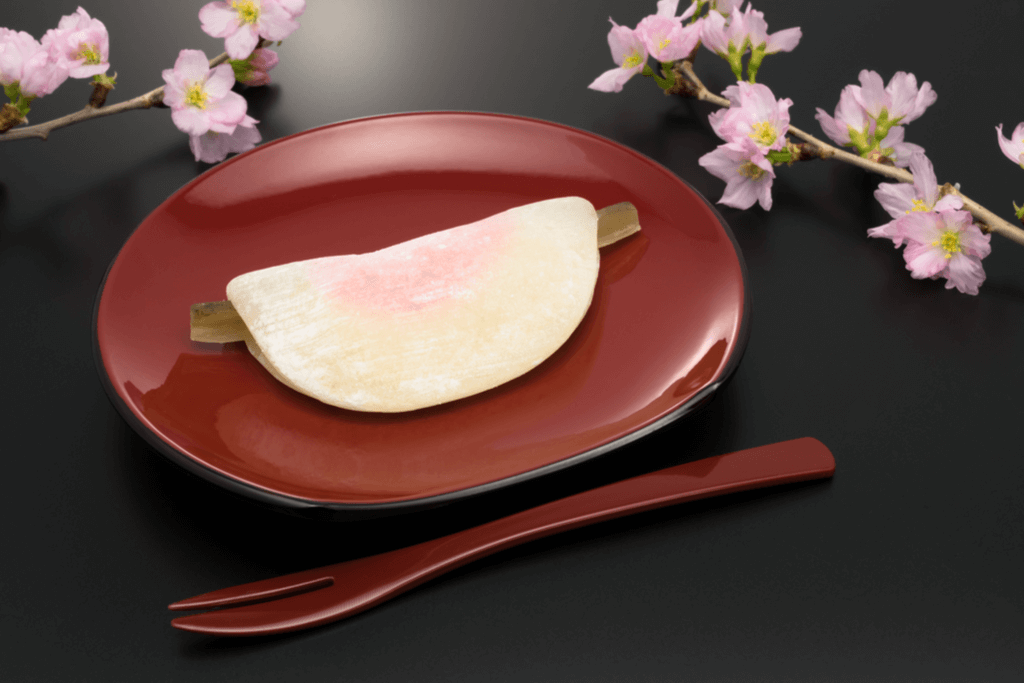
Hanabira (flower petal) mochi is considered a rarer confectionary from the Kyoto region that was traditionally eaten on New Year’s Day in a tradition that was started by the Imperial family. Nowadays, they are traditionally served as a part of the first tea ceremony of the year called Hatsugama.
There are several elements to hanabira mochi, including a candied stick of gobo burdock root, sweetened white bean paste with miso, and a very soft piece of white mochi that’s rolled into a flat circle and folded to enclose the other ingredients.
The hanabira mochi pairs well with the sencha green tea, which is grassy and earthy to bring the flavors all together.
Which type of mochi from this list is your favorite? Have you tried any of the mochi-tea pairings above? Let us know in the comments below!

